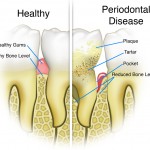
Bone substitutes (BS) are considered to provide clinical improvements in the management of intrabony periodontal defects.Histological studies have shown that enamel matrix derivatives (EMD) a purified fraction of proteins derived from the enamel layer of developing porcine teeth can induce periodontal tissue regeneration. Consequently, it has been suggested that a combination therapy of EMD and BS may lead to better outcomes.
The aim of this review was to evaluate the potential beneficial effects of EMD added to BS in the treatment of intrabony periodontal defects in comparison to the use of BS alone,
Methods
Searches were conducted in the Pubmed, Scopus, EBSCO host Research Databases, Web of Knowledge, OpenGrey databases. This was supplemented by hand searches of the journals Journal of Periodontology, Journal of Clinical Periodontology, Journal of Dental Research, Journal of Periodontal Research, Journal of Dentistry, The International Journal of Periodontics and Restorative Dentistry, Periodontology 2000 and reference searching of included papers.
Randomised controlled trials (split-mouth or parallel study) comparing EMD with BS against BS alone involving a minimum of 10 patients and 6 months follow up were considered. The primary outcomes were Clinical attachment level (CAL) and pocket depth reduction (PD). Two reviewers independently selected study with a third arbitrating disagreements. Risk of bias was assessed using the Cochrane tool. Mean Difference (MD) or the Standardized MD of the estimated effects were calculated and meta-analysis and trial sequential analysis conducted.
Results
- 5 papers including a total of 154 patients were included.
- All 5 studies had high or unclear risk of bias.
- There were no significant differences for CAL or PD for the addition of EMD to a BS
- CAL; MD= 0.35mm (95%CI; −0.48 to 1.18),I2 = 79%
- PD; MD= 0.24mm (95%CI; −0.24 to 0.71), I2 = 58%
Conclusions
The authors concluded: –
In the treatment of intrabony defects, the addition of EMD to BS seems to be not beneficial in terms of CAL gain, PD reduction and REC changes. However, such results should be considered with caution because of the small number of studies included in the meta-analysis and their heterogeneity.
Comments
Earlier this year we considered a broader review of periodontal regenerative therapies (Dental Elf 24th Jul – 2017) by Wu and colleagues. The current review just focuses on whether the combination of EMD and BS produced better outcomes. While a broad search was conducted only 5 small studies were identified and there were all at high or unclear risk of bias. As the available studies are small and of limited quality the findings such be considered cautiously as suggested by the authors conclusions.
Links
Primary Paper
Troiano G, Laino L, Zhurakivska K, Cicciù M, Lo Muzio L, Lo Russo L. Addition of enamel matrix derivatives to bone substitutes for the treatment of intrabony defects: A systematic review, meta-analysis and trial sequential analysis. J Clin Periodontol. 2017 Jul;44(7):729-738. doi: 10.1111/jcpe.12742. Epub 2017 Jun 23. Review. PubMed PMID: 28477366.
Other references
Dental Elf 24th Jul – 2017
Dental Elf 21st Jul – 2014
